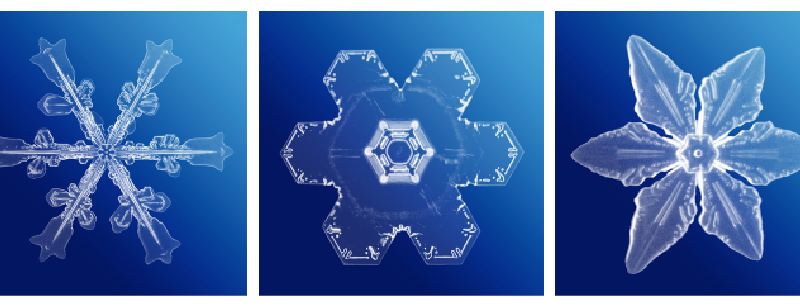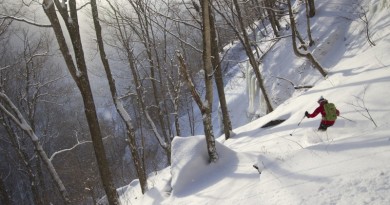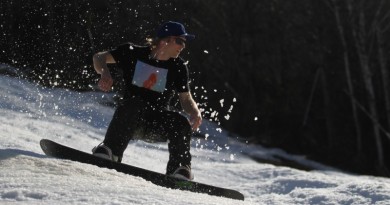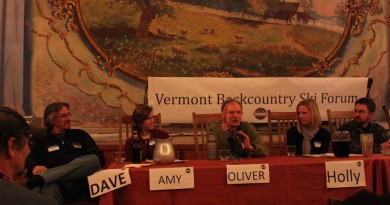Capturing Snow: A Modern Snowflake Bentley
Like many skiers, when there’s a snowstorm, Bruce Corbett has a hard time getting to sleep at night. “My wife gets mad because I usually grab my equipment and run out of the house.”
But in Corbett’s case, “equipment” doesn’t mean skis or a board but a camera and macro configuration that he sets up on his porch. He stands waiting for a flake to fall and gently transfers it to a microscope slide.
“When I first began photographing snowflakes I used a Canon F1 camera mounted on a Zeiss microscope.” The biggest challenge? “Not letting the snowflake melt.” Back then he used a circular fluorescent tube to cut down on the heat and provide 360 degrees of illumination.

Today, he uses a digital Canon Xsi camera on a bellows with a reverse-mounted 50 mm macro lens. “The lighting is now from an electronic flash connected by fiber-optics to a ring light. The focus plane is set up similarly to dark field illumination to reveal a snowflake that has a black background and white edges.”
Corbett grew up in Burlington, skiing Stowe. He graduated from Rochester Institute of Technology with a degree in biomedical communications and worked as a medical photographer.
“As a skier and a Vermonter, I’ve always been fascinated by Snowflake Bently,” Corbett acknowledges. Wilson Bentley, a self-educated farmer from Jericho, adapted a microscope to a bellows camera and, in 1885, became the first person to photograph a single snow crystal. His work is on display at the Jericho Historical Society.
Corbett goes about his hobby with similar dedication. “One of my biggest challenges is you can’t really wear gloves, so your hands freeze doing this,” he says. To keep track of the temperature and humidity on any given day, he has set up a small weather station in his backyard (on Wunderground.com as station number KVTHINES4 in Hinesburg).
“In very cold and drier air the crystals will remain small and compact,” he explains. “Where you see the longer, narrower branches, temperature was approximately 18 degrees and 63 percent relative humidity. The compact hexagon shapes were shot at about 5 degrees and 20- to 30-percent relative humidity.”
Snowflakes are fractals, meaning they are created from repeating patterns. In the case of snow crystals, that’s often a hexagon that multiplies its shape, usually growing into a six-sided star (or, occasionally, a 3- or 12-sided shape). In fact, one of the earliest fractal curves described in mathematics is the Koch snowflake.
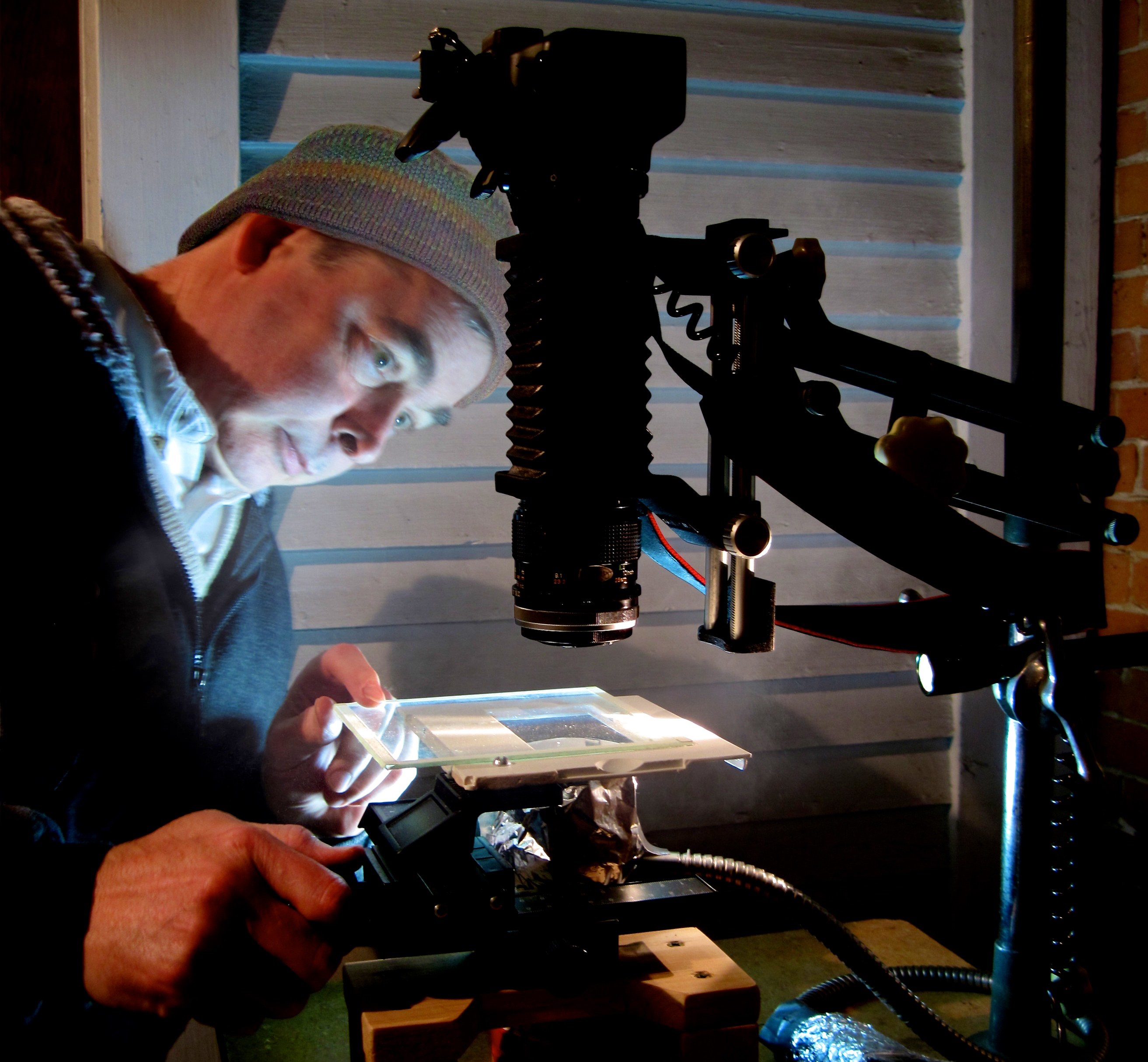
“After having photographed many hundreds of snowflakes, I am constantly amazed at the delicate details which each unique crystal forms,” he says. “The ice will form a hexagonal structure because of the arrangement of oxygen and hydrogen atoms. If the air is very humid the crystals will develop long branches and will clump together to form large “puffs” of snow.”
The flakes he captures range from 1/16th to 1/4 of an inch in size. He points to the cover of this magazine and the “o” in ‘vtskiandride.com.’ “That’s about the size of the hexagonal ones.”
By the time the flakes reach the enlarged framed print that he sells on his website, snowtography.com and at Vermont Teddy Bear (where he now works as a graphic designer), they’ve been magnified 14 times to as much as 56 times.
Each snowflake image is modified digitally to remove the background around the edges of the flake so as to show a more uniform black (or blue) background. Last year, he captured 38 new snowflake images. “I work all day, so I am pretty limited in when I can shoot,” he notes.
When asked if the adage “no two snowflakes are the same,” is true, Corbett laughs. He says, “having worked with scientists I’ll give you the scientific response: we really don’t have any way of knowing that, do we?”
You can purchase Bruce Corbett’s gorgeous prints at Vermont Teddy Bear’s Shelburne shop or online at snowtography.com. All photos ©Bruce Corbett/Snowtography

